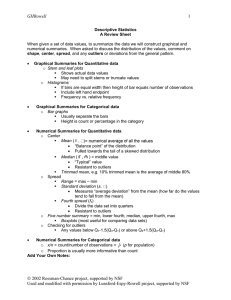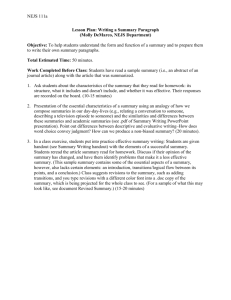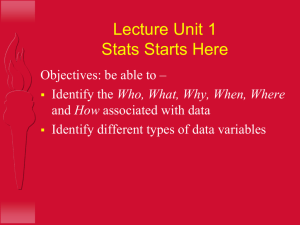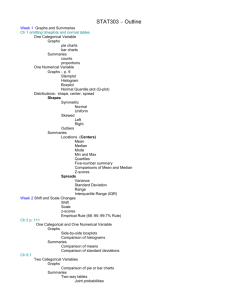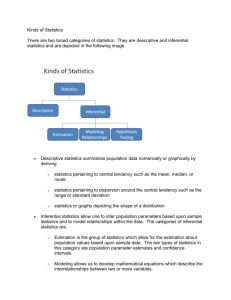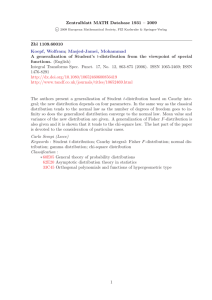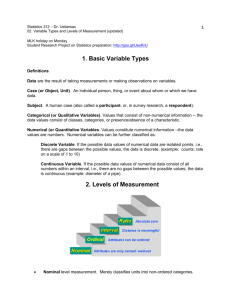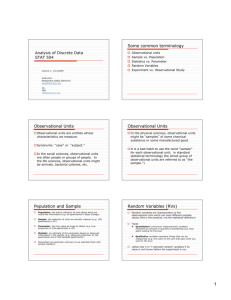Review of Introductory Statistics Topics Conceptual Model for
advertisement
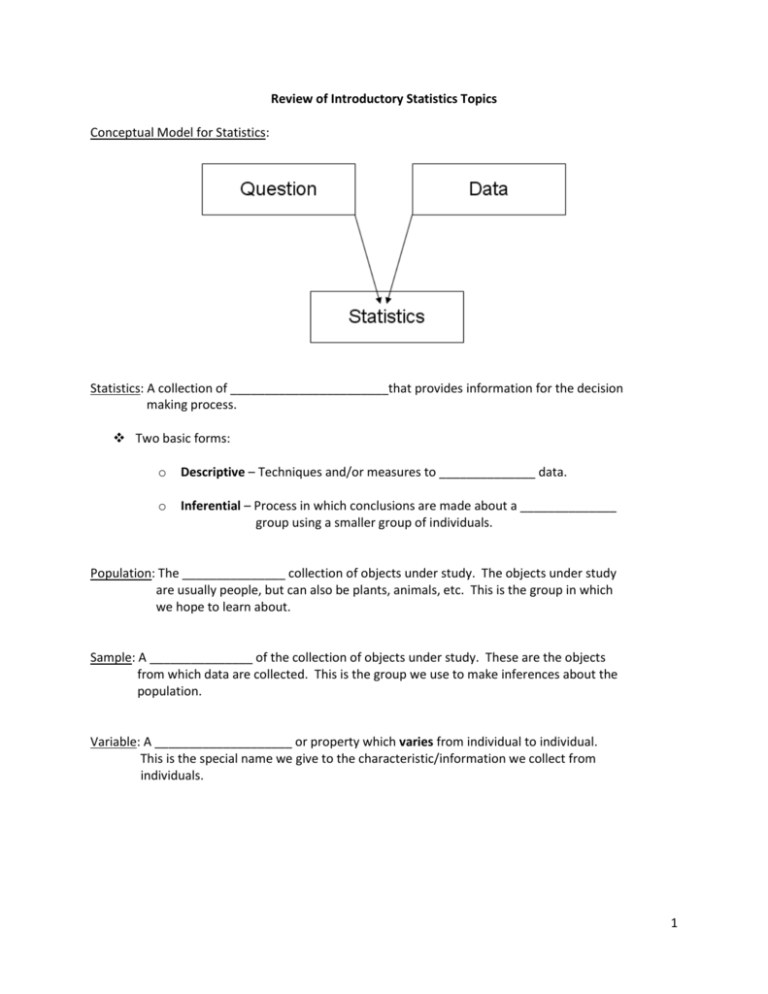
Review of Introductory Statistics Topics Conceptual Model for Statistics: Statistics: A collection of _______________________that provides information for the decision making process. Two basic forms: o Descriptive – Techniques and/or measures to ______________ data. o Inferential – Process in which conclusions are made about a ______________ group using a smaller group of individuals. Population: The _______________ collection of objects under study. The objects under study are usually people, but can also be plants, animals, etc. This is the group in which we hope to learn about. Sample: A _______________ of the collection of objects under study. These are the objects from which data are collected. This is the group we use to make inferences about the population. Variable: A ____________________ or property which varies from individual to individual. This is the special name we give to the characteristic/information we collect from individuals. 1 It is important to identify the data type before doing a statistical analysis. The data type determines which analyses are appropriate and which are not. Two types of data: o o Categorical (Qualitative) – Measurements are classified into _______________. Nominal: Order is _______ important. Ordinal: Order _______ important. (Measurements fall in some natural order) Numeric (Quantitative) – Measurements are taken on a (naturally) _______________ scale. Discrete: There are ________ between possible data values. (You can think of these as counting numbers) Continuous: There are no gaps between possible data values. That is the measurements occur on a _______________ scale. Example: The National Center for Health Statistics administers a survey to National Health and Nutrition Examination Survey participants on an annual basis. The survey participants are randomly selected from the U.S. population (http://www.cdc.gov/nchs/nhanes/participant.htm). The following survey items refer to the participant’s dermatological health. Classify each item (variable) as nominal, ordinal, discrete, or continuous. Survey Item/Variable Variable Type How many moles do you have that are at least ¼ inch in diameter? What is your natural hair color? When you go outside on a very sunny day for more than an hour, how often do you wear sunscreen (always, most of the time, sometimes, rarely, or never)? How many times in the past year have you been sunburn? If applicable, diameter of moles or lesions suspicious of melanoma or other malignancies. 2 Methods of Data Collection o Experiments – These types of studies are commonly associated with the _____________ sciences. o Experiments allow for the researcher to conclude _____________________. Types of Experiments: Completely Randomized Design Randomized Complete Block Design Matched Pairs Design – commonly used for Pre-test/Post-test scenarios. Single/Double Blinded Observational Studies – Researchers do not _________________ the factors in the study. Types of Observational Studies: Retrospective – Participants recall the __________. Prospective – Participants are followed in the __________. Case-Control – Responses from subjects with a particular character or _____ are compared to those without. o Surveys & Polls – These types of studies are usually conducted in the _______________ sciences. These are a type of observational study. Summarizing Data There are many ways to graphically and numerically summarize data. The appropriate summary depends on the type of data being summarized. Categorical Data o Graphical Summaries: o Numerical Summaries: 3 Numerical Data o Graphical Summaries: o Numerical Summaries: Useful Distributions Binomial Distribution – Recall the Binomial distribution can be used when the following conditions have been satisfied: o There are _____ fixed trials. o There are 2 outcomes: ___________________, ___________________ o P(____________________) = p remains the same for each trial. o The trials are ________________________ Chi-square Distribution – Recall the Chi-Square distribution can be used for analyzing data in the following manner: o Testing to see if two proportions are different. o Goodness of Fit Test o Testing to see if two variables are independent of one another. T-distribution – Recall the t-distribution is used for comparing mean(s) when the population standard deviation is unknown. 4
